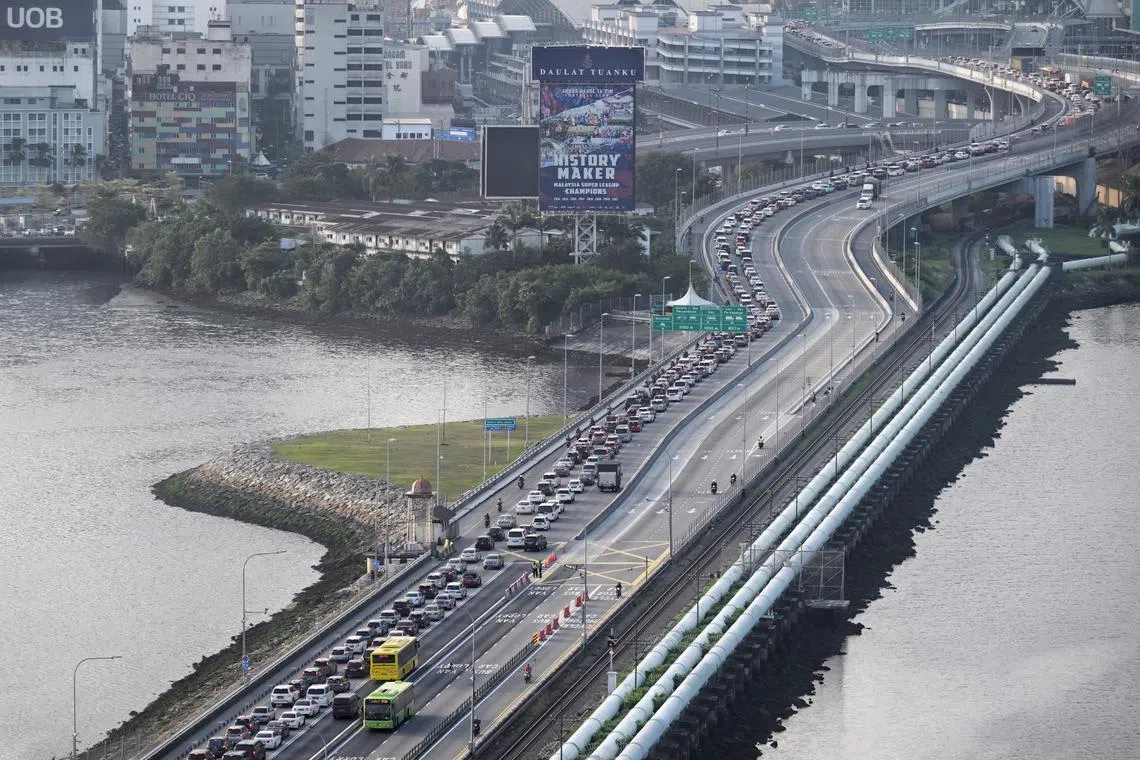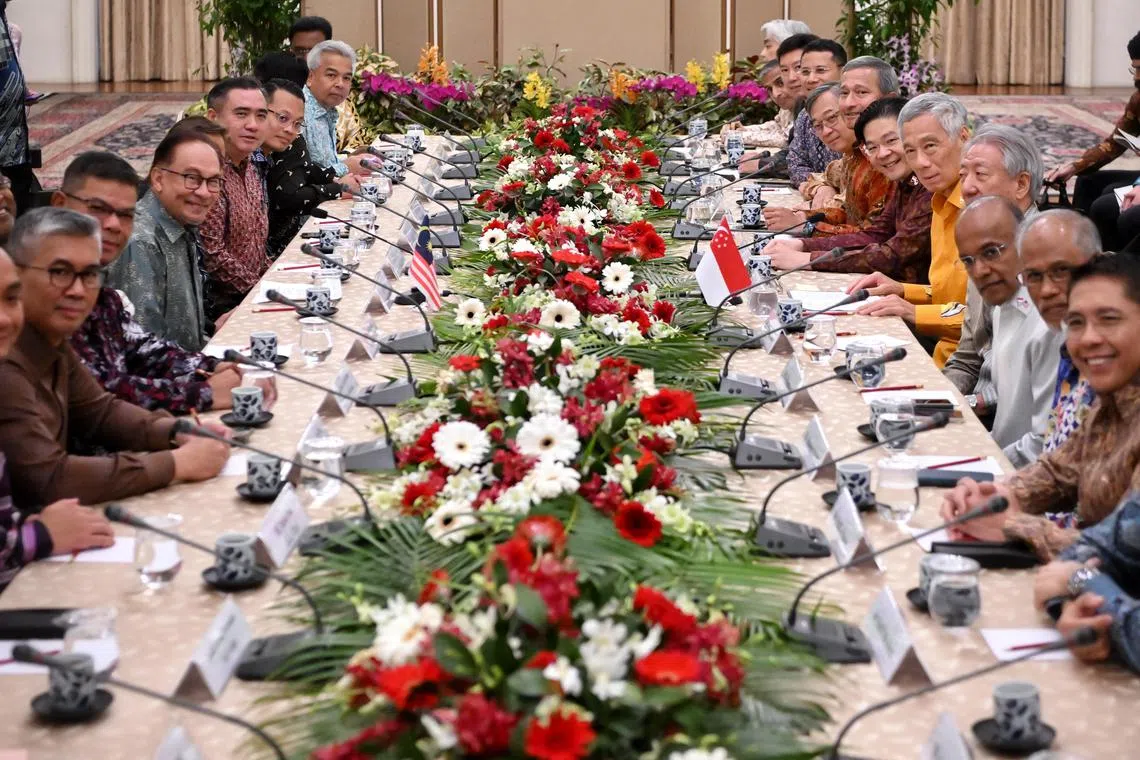Good progress being made to ease Causeway congestion: PM Lee, PM Anwar
Sign up now: Get ST's newsletters delivered to your inbox

Heavy traffic at the Woodlands Causeway towards Johor Bahru on Sept 1. Congestion on the Causeway is occasionally a sticking point for travellers from both sides.
PHOTO: ST FILE
Follow topic:
SINGAPORE - Good progress is being made to ease congestion at Singapore’s and Malaysia’s land checkpoints, particularly to increase the capacity of the Causeway, said Prime Minister Lee Hsien Loong on Monday.
As with the considerable effort being made to improve Customs, immigration and quarantine (CIQ) clearance on the Johor side, the redevelopment and expansion of Woodlands Checkpoint will increase the flow-through rate of people travelling by land between the two countries, said PM Lee.
The Johor Bahru-Singapore Rapid Transit System (RTS) Link remains on track for completion by end-2026, he added at a press conference at the conclusion of the 10th Singapore-Malaysia Leaders’ Retreat
During their meeting, PM Lee explained to Malaysian Prime Minister Anwar Ibrahim why Woodlands Checkpoint needed to be redeveloped, which will require land reclamation, and he was glad Datuk Seri Anwar supported the project.
Mr Anwar said Singapore requires land that is currently under the Malaysian authorities for the redevelopment, and that Malaysia will facilitate the sale.
“We can facilitate the sale, so that Singapore can have the facility to then make sure that the flow is made more easily, both for Malaysian workers to Singapore, and Singaporeans coming particularly during the weekends into Johor,” he said at the press conference.
Connectivity remains a priority area for the two countries, with congestion on the Causeway occasionally being a sticking point for travellers from both sides.

Prime Minister Lee Hsien Loong and his Malaysian counterpart Anwar Ibrahim speaking at a joint press conference on Oct 29. PM Lee said both Singapore and Malaysia are working closely to make full use of the capacity of the Causeway.
ST PHOTO: KUA CHEE SIONG
PM Lee said the two sides are working closely to make full use of the capacity of the Causeway, “because the flow depends not just on how wide the Causeway is, but also on the clearance on both sides, the CIQ in Malaysia at JB, and the CIQ at Woodlands”.
He noted that the Immigration and Checkpoints Authority (ICA) has introduced various initiatives to smoothen cross-border travel while maintaining border security, though the longer-term solution is to enlarge the footprint of Woodlands Checkpoint to handle growing traffic volume.
ICA and the Singapore Land Authority projected in May 2022 that traffic volume at Woodlands will increase almost 40 per cent by 2050,
Mr Anwar said congestion at the Causeway had caused a huge problem, particularly for workers from Malaysia, but that the problem has eased.
The RTS Link is a key project to increase connectivity for both peoples, noted PM Lee.
In March, Singapore said the construction of the third land link between Singapore and Malaysia is progressing well, with 45 per cent of the work on the Singapore side completed.
When the 4km RTS Link shuttle service starts operating, passengers will be able to travel from Bukit Chagar station in Johor Bahru to Woodlands North station, or in the reverse direction, in about five minutes.
As will be the case at Bukit Chagar station, the CIQ facilities of both Singapore and Malaysia will be co-located within the same building at Woodlands North.
This means that passengers need to clear immigration at their point of departure only, instead of having to do it a second time when they arrive, as is the current practice for land border crossings.
Passengers will also be able to transfer from the RTS station to the Thomson-East Coast Line via an underground link, without needing to exit the station.

PM Lee Hsien Loong and Malaysian PM Anwar Ibrahim with the ministers from both countries at a delegation meeting at the Istana on Oct 29.
ST PHOTO: KUA CHEE SIONG
The two sides had in 2018 signed a bilateral agreement to build the rail link, which was originally scheduled for completion in 2024. Work on the link officially resumed in July 2020, following several suspensions.
When ready, the train service will be able to serve up to 10,000 passengers an hour in each direction.


